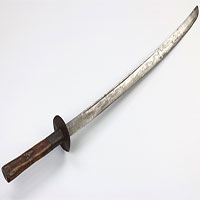This country had the opportunity to wipe out its arch-rival Russia and become the sole ruler of Eastern Europe in the early 17th century .
For centuries, Eastern Europe was the battleground of two Slavic races . Those are Russians and Poles. It is worth mentioning that the more Russia won, the more Poland’s influence became smaller and smaller.

Poland once had a period in history that almost annexed Russia, gaining hegemony in Eastern Europe.
Yet there was also a single period in history where the Poles had the clearest chance to bring the Russians to their knees.
It was at the beginning of the 17th century, when Russia fell into internal turmoil after the death of Ivan IV – the first Russian tsar, also known as Ivan the Terrible or Ivan the Tyrant.
The Polish-Lithuanian Commonwealth captured the Kremlin and made the Polish royal lineage the Russian tsar.
In 1604, after a long wait, the Polish-Lithuanian alliance created a forged descendant of Ivain IV, called False Dmitry I , who claimed to be the rightful heir to the Russian throne, after the affair. failed assassination.
False Dmitry I once lived in Poland and was chosen by the Polish nobility as a candidate for the Russian Tsar.
In 1605, False Dmitry I led an army of 3,500 men from Poland to Moscow to “reclaim power”, then belonged to Tsar Boris Godunov – whose sister married the son of King Ivan IV.
The factions opposed to Boris also took this opportunity to join forces with Dmitry. In the middle of the fighting, Boris suddenly died and False Dmitry I dignified to the throne in Russia.
Contrary to Polish hopes, the impostor did not become a puppet, nor did he fulfill his promise when he was helped by the Polish-Lithuanian alliance, namely to cede territory in the west and build a church. Catholicism in Russia.

The Polish king Sigismund III was the one who planned to make his son tsar of Russia.
But False Dmitry I also did not hold power for long because of the power struggle among the Russian nobility. On May 27, 1606, the forger was assassinated, leading to a period of time when Poland looked for another opportunity to infiltrate. Russia.
In 1609, there was a conflict within Russia between the nobility and the newly enthroned Tsar Vasily IV. The Russian aristocracy, tired of internal strife, was increasingly inclined to the idea of inviting an external candidate and the son of the Polish king who was well-suited to be the new leader.
Vasily IV, knowing his position was threatened, immediately made an alliance with Poland’s enemy, Sweden. The Polish-Russian War broke out.
On July 4, 610, at the Battle of Klushino, the Polish-Lithuanian coalition led by Cossack leader Hetman Stanislav Zolkiewski defeated the Russian-Swedish coalition. Tsar Vasily IV was deposed.
Two months later, the Russian people swore allegiance to “the Tsar and Prince Vladislav Sigismundovich” – the son of Polish king Sigismund III. Vladislav, then 14 years old, did not appear at the swearing-in ceremony in Moscow.
In fact, Sigismund III personally signed decrees and orders, running Russia from Poland. But Sigismund III could not interfere too deeply in Russia’s internal affairs because of the objections of the Russian nobility.
Under the Polish-Russian agreement, neither the Catholic faith nor the Polish nobility had the right to impose in Russia. Instead of becoming one country, Poland and Russia reached an agreement on an “eternal peace” , committing to act together against a common enemy and to realize free trade.
Incredibly, Sigismund III unilaterally sent troops into Moscow, occupied the Kremlin, with the intention of completely erasing Russia from the world map.
The Polish-Lithuanian garrison was strongly opposed by the local Russian population. A Polish nobleman named Blinsky in a drunken state severely damaged the icon of the Virgin Mary at the Sretensky Gate.
To appease the anger of the locals, the Kremlin commander, Alexander Gonsevsky, ordered the offender’s hand cut off and Blinsky burned alive in the square.

The Polish army surrendered in Moscow.
But the anger of the Moscow people reached a peak, turning into a liberation movement. On April 1, 1611, a clash between the Moscowians and a group of Poles and Lithuanians turned into a bloodbath. Gonosevsky was unable to prevent this.
All attempts of Polish king Sigimund III to wait for his son Vladislav to be old enough to lead Russia had collapsed. In the spring of 1611, most of Moscow was liberated and the Polish-Lithuanian forces stationed in the Kremlin were besieged and in dire straits. The garrison’s hopes were dashed when the Polish reinforcements were defeated near Moscow.
A member of the Russian royal family named Mikhail Fedorovich Romanov took this opportunity to declare himself tsar of Russia, on July 21, 1613. That meant Russia was in a state of two tsars, with one being the son of the king of Poland.
The Holy Roman Empire’s ambassador, Erasmus Gandelius, didn’t know how to deal with it either. “A country with two leaders, one is fire and the other is water, how can these two factors be reconciled?”
In late 1616, Tsar Vladislav, then 20 years old, attempted to consolidate power one last time. The Polish-Lithuanian army besieged Moscow again, but this time the Poles were unable to help Vladislav. Internally, Russia also leaned in favor of Tsar Romanov.
After the death of Sigismund III in 1632, Vladislav became king of the Polish-Lithuanian Commonwealth. Two years later, Vladislav relinquished his claim to the Russian throne.
The bond between Poland and Russia continues to this day, but every time it goes through war, Russia becomes stronger than ever, and Poland probably only regrets when they have experienced war. had a tenth chance to wipe out the opponent in the east, but then failed again.

